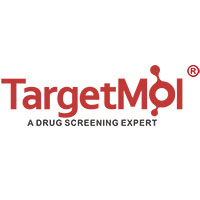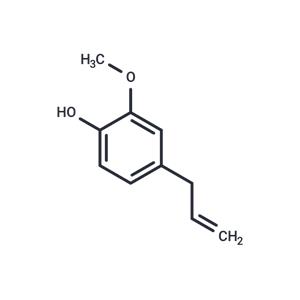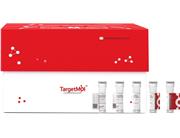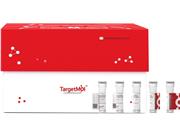| Name | Eugenol |
| Description | Eugenol (Allylguaiacol) is a Standardized Chemical Allergen. The physiologic effect of eugenol is by means of Increased Histamine Release and Cell-mediated Immunity. |
| Cell Research | Cells are seeded into 96-well plates and incubated overnight. The medium is replaced with fresh one containing the desired concentrations of eugenol. After 20 hrs, 10 μl of the WST-1 reagent is added to each well and the plates are incubated for 4 hrs at 37°C. The amount of formazan is quantified using ELISA reader at 450 nm of absorbance.(Only for Reference) |
| In vitro | Eugenol has antiproliferative effects in diverse cancer cell lines as well as in B16 melanoma xenograft model. Eugenol induces apoptosis in various cancer cells, including mast cells, melanoma cells and HL-60 leukemia cells. Eugenol at low dose (2 μM) has specific toxicity against different breast cancer cells. This killing effect is mediated mainly through inducing the internal apoptotic pathway and strong down-regulation of E2F1 and its downstream antiapoptosis target survivin, independently of the status of p53 and ERα. Eugenol inhibits also several other breast cancer related oncogenes, such as NF-κB and cyclin D1. Moreover, eugenol up-regulates the versatile cyclin-dependent kinase inhibitor p21WAF1 protein, and inhibits the proliferation of breast cancer cells in a p53-independent manner[2]. |
| In vivo | Eugenol inhibits the proliferation of breast cancer cells in vivo as well. The inhibitory effect of eugenol on onco-proteins is also observed in vivo in tumor xenografts[2]. Eugenol (0.2, 1.0, 5.0 or 25 mg/kg) when given orally at three different times in relation to the time of CCl4 dosing (i.p administration of 0.4 mg/kg), i.e. prior to (-1 hr), along with (0 hr) or after (+ 3 hrs), prevents significantly the rise in SGOT(Serum glutamic-oxaloacetic transaminase) activity, lipid peroxidation as well as liver necrosis. The protective effect is more evident at 1 mg and 5 mg eugenol doses than at 0.2 and 25 mg does. However, the decrease in microsomal G-6-pase activity by CCl4 treatment is not prevented by eugenol suggesting that the damage to endoplasmic reticulum is not protected[3]. |
| Storage | Powder: -20°C for 3 years | In solvent: -80°C for 1 year | Shipping with blue ice/Shipping at ambient temperature. |
| Solubility Information | DMSO : 240.00 mg/mL (1461.63 mM), Sonication is recommended.
10% DMSO+40% PEG300+5% Tween 80+45% Saline : 5.00 mg/mL (30.45 mM), Sonication is recommended.
|
| Keywords | ReactiveOxygenSpecies | Reactive Oxygen Species | Parasite | Inhibitor | inhibit | Ferroptosis | Eugenol | Bacterial | Apoptosis | Antibacterial |
| Inhibitors Related | Neomycin sulfate | Ethoxyquin | Aceglutamide | Adipic dihydrazide | Sulfamethoxazole sodium | Terbinafine hydrochloride | Hydroxychloroquine | 2-Amino-2-methyl-1-propanol | Tributyrin | Fenpyroximate | Dimethyl sulfoxide | BES |
| Related Compound Libraries | Natural Product Library | Anti-Inflammatory Traditional Chinese Medicine Compound Library | Drug Repurposing Compound Library | Miao medicine Compound Library | Flavor Natural Product library | Immunology/Inflammation Compound Library | Anti-Aging Compound Library | Bioactive Compounds Library Max | Heat-Clearing and Detoxifying Traditional Chinese Medicine Compound Library | Ancient Chinese Classical Formulas Compound Library | Food as Medicine Compound Library | Anti-Cancer Drug Library |

 United States
United States






